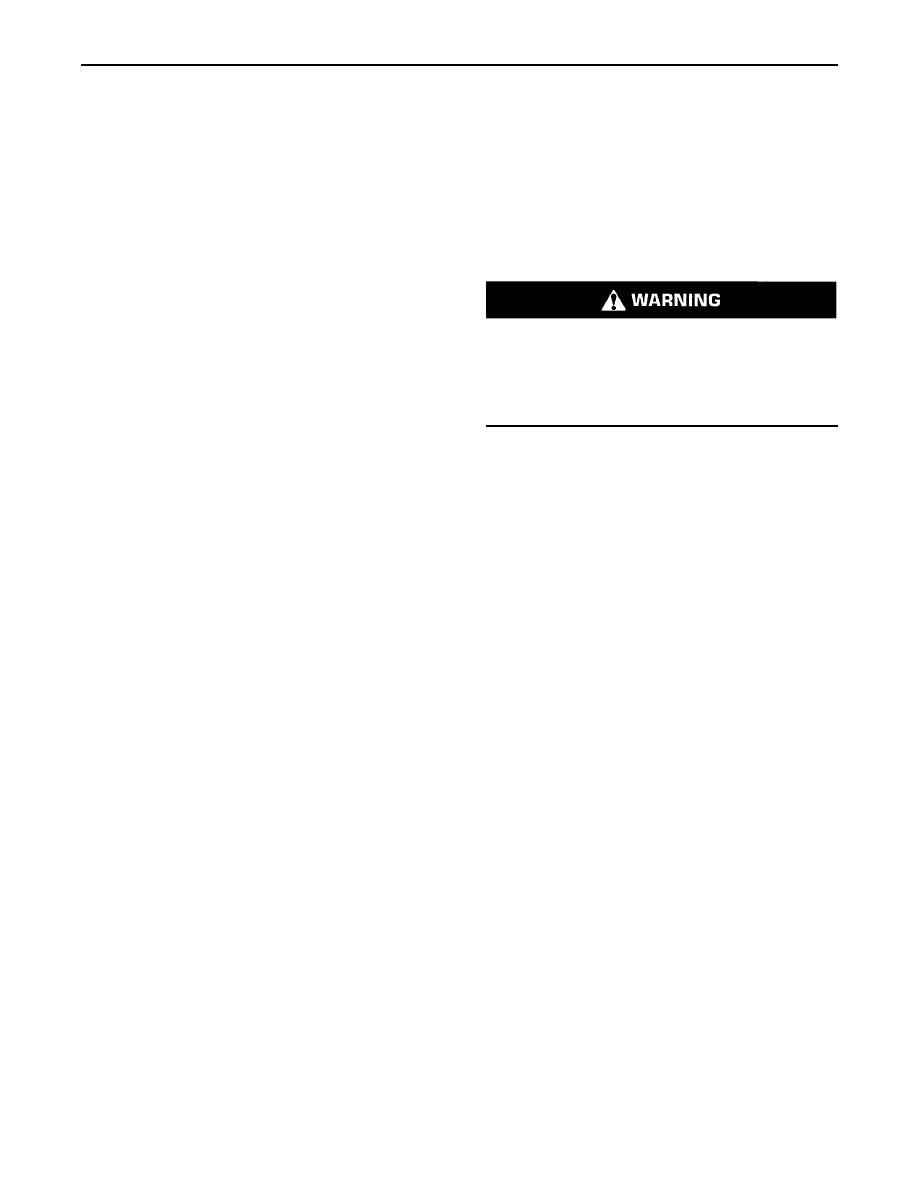 |
|||
|
|
|||
|
|
|||
| ||||||||||
|
|
 TM 9-2320-312-24-2
Testing and Adjusting Section
15. Check the shunt line. The shunt line must be
i01390078
submerged in the expansion tank. A restriction
Cooling System - Inspect
of the shunt line from the radiator top tank to the
engine water pump inlet will cause a reduction
SMCS Code: 1350-040
in water pump efficiency. A reduction in water
pump efficiency will result in low coolant flow
Cooling systems that are not regularly inspected are
and overheating.
the cause for increased engine temperatures. Make
a visual inspection of the cooling system before any
16. Check the water temperature regulator. A water
tests are performed.
temperature regulator that does not open, or
a water temperature regulator that only opens
part of the way can cause overheating. Refer
to Testing and Adjusting, "Water Temperature
Regulator - Test".
Personal injury can result from escaping fluid un-
der pressure.
17. Check the water pump. A water pump with
a damaged impeller does not pump enough
If a pressure indication is shown on the indicator,
coolant for correct engine cooling. Remove
push the release valve in order to relieve pressure
the water pump and check for damage to the
before removing any hose from the radiator.
impeller. Refer to Testing and Adjusting, "Water
Pump - Test".
1. Check the coolant level in the cooling system.
Refer to Operation and Maintenance Manual,
18. Check the air flow through the engine
"Cooling System Coolant Level - Check".
compartment. The air flow through the radiator
comes out of the engine compartment. Ensure
2. Check the quality of the coolant. The coolant
that the filters, the air conditioner, and similar
should have the following properties:
items are not installed in a way that prevents the
free flow of air through the engine compartment.
Color that is similar to new coolant
19. Check the aftercooler. A restriction of air flow
Odor that is similar to new coolant
through the air to air aftercooler (if equipped)
can cause overheating. Check for debris or
Free from dirt and debris
deposits which would prevent the free flow of
air through the aftercooler. Refer to Testing and
If the coolant does not have these properties,
Adjusting, "Aftercooler - Test".
drain the system and flush the system. Refill
the cooling system with the correct mixture of
20. Consider high outside temperatures. When
water, antifreeze, and coolant conditioner. Refer
outside temperatures are too high for the rating
to Operation and Maintenance Manual, "General
of the cooling system, there is not enough of a
Coolant Information".
temperature difference between the outside air
and coolant temperatures.
3. Look for leaks in the system.
21. Consider high altitude operation. The cooling
Note: A small amount of coolant leakage across
capacity of the cooling system goes down as
the surface of the water pump seals is normal.
the engine is operated at higher altitudes. A
This leakage is required in order to provide
pressurized cooling system that is large enough
lubrication for this type of seal. A hole is provided
to keep the coolant from boiling must be used.
in the water pump housing in order to allow this
coolant/seal lubricant to drain from the pump
22. The engine may be running in the lug condition.
housing. Intermittent leakage of small amounts of
When the load that is applied to the engine is
coolant from this hole is not an indication of water
too large, the engine will run in the lug condition.
pump seal failure.
When the engine is running in the lug condition,
engine rpm does not increase with an increase
4. Ensure that the airflow through the radiator does
of fuel. This lower engine rpm causes a reduction
not have a restriction. Look for bent core fins
in air flow through the radiator. This lower engine
between the folded cores of the radiator. Also,
rpm also causes a reduction in coolant flow
look for debris between the folded cores of the
through the system. This combination of less air
radiator.
and less coolant flow during high input of fuel
will cause above normal heating.
5. Inspect the drive belts for the fan.
6. Check for damage to the fan blades.
|
|
Privacy Statement - Press Release - Copyright Information. - Contact Us |